Shuttle SK83G: BIOS
As with the vast majority of motherboards in the world, the Shuttle FX83 motherboard utilizes the Phoenix Award BIOS.The SK83G allows a good amount of Vcore tuning in its BIOS, up to 1.55V in 0.0250V increments, and in 0.050V increments from there up to 1.70V. Actual operating Vcore when set to its default (1.50V) Auto setting is somewhere between 1.53V and 1.55V on average. This is a nice plus with this system, as setting Vcore to 1.70V in the BIOS actually ends up being more like 1.73V-1.75V. Unfortunately, as you will soon see, you can't take much advantage of these good Vcore features with the way the SK83G overclocks.
The SK83G BIOS also allows AGP voltage adjustments up to 1.8V in 0.1V increments, as shown above. VAGP adjustments aren't very useful beyond extreme video card overclocking, and even then, its use is mostly minimal. Anyway, despite the fact that the default AGP spec calls for operating voltage of 1.5V, we suggest 1.6V for maximum stability. In fact, some motherboards already set VAGP to 1.6V manually, including the SK83G's motherboard. The biggest problem with the VAGP in this BIOS is that it's apparently capped at 1.48V, an odd problem to say the least. Though, if we had to guess, we'd say that VAGP tuning simply doesn't work.
As shown above, VDIMM adjustments aren't terribly spectacular. Even though adjustments that are available up to 2.8V in 0.1V increments aren't poor, it's fairly average nowadays. Still, if you have little use for memory overclocking, your DDR module's default operating voltage of 2.5V will more than suffice. However, setting VDIMM to 2.6V isn't a bad idea, if you want to take advantage of your memory module's lowest possible memory timings; the extra voltage aids in keeping stable low latencies, like CAS 2-2-2-6 (though, those low latencies would probably require BH5 chips, which are all but extinct, except for promising new Samsung chips).
Arguably, the most significant overclocking feature of a motherboard is its FSB adjustments. Though, to be clear, Athlon 64 systems don't really have a FSB; there is no such thing as a FSB in this type of system because the memory controller has moved from the North Bridge onto the Athlon 64 CPU die itself. Therefore, technically, the bus that you're overclocking is the HT (HyperTransport) bus, AMD's name for their Athlon 64 (a.k.a. K8 Hammer) bus. Still, many manufacturers refer to the Athlon 64's HT bus as FSB, even if they know it's technically inaccurate. But that doesn't change the fact that you can adjust an HT bus exactly like you would a FSB, such as those found on Athlon XP and Pentium 4 processors. In the SK83G's case, you can adjust the Athlon 64's bus up to 232MHz. Unfortunately, this is simply unacceptable. 300MHz should really be the minimum with Athlon 64 boards these days, and so we're really not sure what the big deal is here.
The SK83G's PC Health section is well organized and features readings such as Vcore, VAGP, and VDIMM, all vital readings for most enthusiasts these days. Other important readings include System, CPU and Power temperatures, three different fan header speed readings, and PSU voltages (all rails). Be sure to check out the CPU Fan Speed Control option, as it does an excellent job of smartly adjusting to the task (program) at hand and therefore significantly reducing system noise in general.


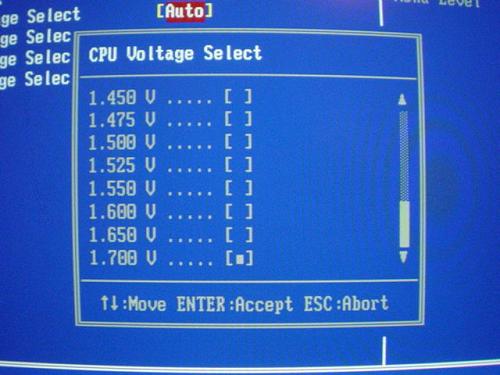
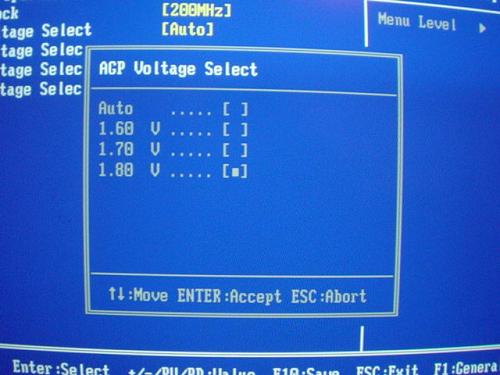
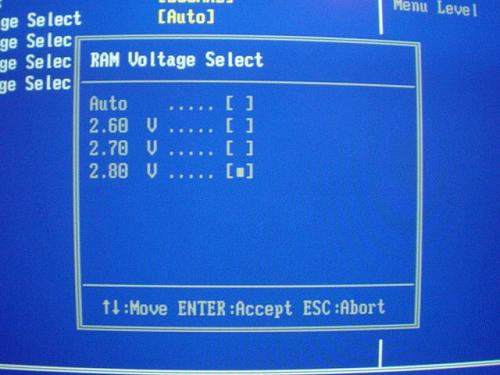
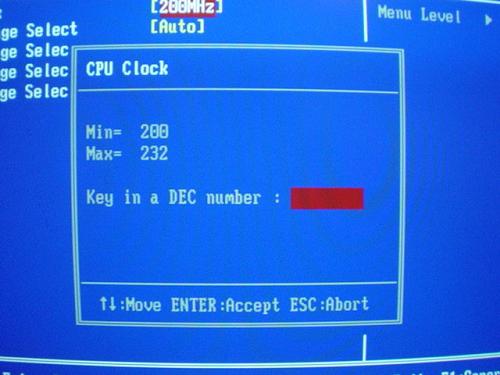
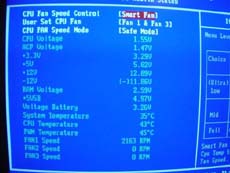
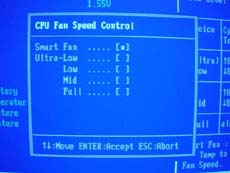








18 Comments
View All Comments
cosmotic - Wednesday, July 14, 2004 - link
Am I the only one that wants to know how they got NVIDIA IDE controllers on VIA chipset motherboards? Ether that, or your specs are wrong.Wesley Fink - Wednesday, July 14, 2004 - link
#3 - You might be surprised at how some use their SFF machines. For example, the Shuttle SFF based on the 875 chipset has become a darling of the Extreme Overclocking crowd. In fact, I know 2 users who run their 875 SFF with mobile processors for low heat, the FSB at 300FSB, and top-end video. They take the machines to LAN parties.We always publish stock performance metrics as our baseline. If you don't personally care about overclocking an SFF, then just skip that information. We understand overclocking info is not important to some, but it does matter to others.
ggnl - Wednesday, July 14, 2004 - link
Good review. Very informative, but I have a problem.The pictures are just fugly! I don't understand why you couple great analysis of the hardware with blurry, out of focus, poorly lit photographs.
And it's not just this review, most of the reveiws on this site have the same crappy pictures. Please...pretty please with sugar on top...send one or two of your tech gurus to a basic studio photography class at the local community college and get a camara with decent macro ability. What did you do with that Canon 10D you reviewed a few weeks ago?
This from the site that's going to be bringing you camera reviews...
overclockingoodness - Wednesday, July 14, 2004 - link
nserra #3 - I can't disagree with you more.1. These systems are mainly designed as portable LAN machines for enthusiasts. And since AT is an enthusiasts, it makes sense to overclock the systems. Almost every site posts overclocking reslts, which makes complete sense.
2. Why not? Many enthusiasts want best performance from these little PCs. If you want the best gaming performance, it makes complete sense to include a 6800 Ultra and/or 9800. I think you are the one with a messed up mind. So you are saying that having an Athlon64 chip is right, but having a high-end video card is wrong? Why the heck would someone want a high-end CPU if they are not going to do gaming? Your arguments are useless.
3. Yeah, I agree with that BUT these systems are not for small businesses and schools who are not going to do anything with it. Don't forget that these systems are tragetted towards enthusiasts and nicely enough SFF proves be to a good form factor for space conscious users.
4. Yep, agreed.
5. You are wrong again. AnandTech has a selected benchmark suites which they use everytime to compare performance against competitor's products. If they were to start using new gaming and new testing methods for each product review, we, as readers, won't be able to understand the difference between each product and/or AnandTech will have to review 10 systems over and over again, which is a huge time wastage.
I give you some credit for your post but all the important points are bogus and utterly useless. Please check your facts and by the way if these reviews are getting boring...then why in the world are you even reading them. Stop complaining and do not ask AnandTech to change the testing methods upside down just because you. You are not special, in fact, you are one of the ignorant readers who doesn't know a thing about computers.
nserra - Wednesday, July 14, 2004 - link
Guys, these reviews are starting to get boring.1st - I don’t see the point of testing over clocking capabilities on "cube" PC's, it's ridiculous. The people at the market these products are aimed, this is not important, especially on such small systems, who want to do that.
2nd - I don’t see the point of buying a such small system and put a Geforce 6800 or even an ati 9800, the person that does that is not in it right mind.
3rd - the review of a system like these is more important sound quality and video quality playback as 2D display quality, and specially functionality or "extras" that systems like these have.
4th - The noise the system make while is working is also very important.
5th – And really these charts that always look the same are getting boring, or you start choosing applications/games that show “significant” differences between the various chipsets or these review get boring to read.
Jeff7181 - Wednesday, July 14, 2004 - link
I don't understand why this is "AMD's shot at SFF."Shuttle has had AMD based SFF computers for a while now... is the processor a special SFF processor or something?
Sonic587 - Wednesday, July 14, 2004 - link
On the Quake 3 Arena w/Unichrome benches, could you move the FPS results further to the right? You've got some text overlapping there and it's quite hard for me to read what FPS was obtained.Other than that, nice review.
Gbugmenot - Thursday, October 17, 2013 - link
The difference between you and the others like the ones who make posts at http://www.stackfront.com is not much. You must be a 12yr old child who think know everything about computers, have you ever come out from your house and see the true world, the true reality? Have talked with other people non computer fanatics like your self? Regular PC users? Do you know about their needs? What they really want?From all the video cards in the world how many you do think are overclocked? 1/10000 1/1000 1/100? 1/10?